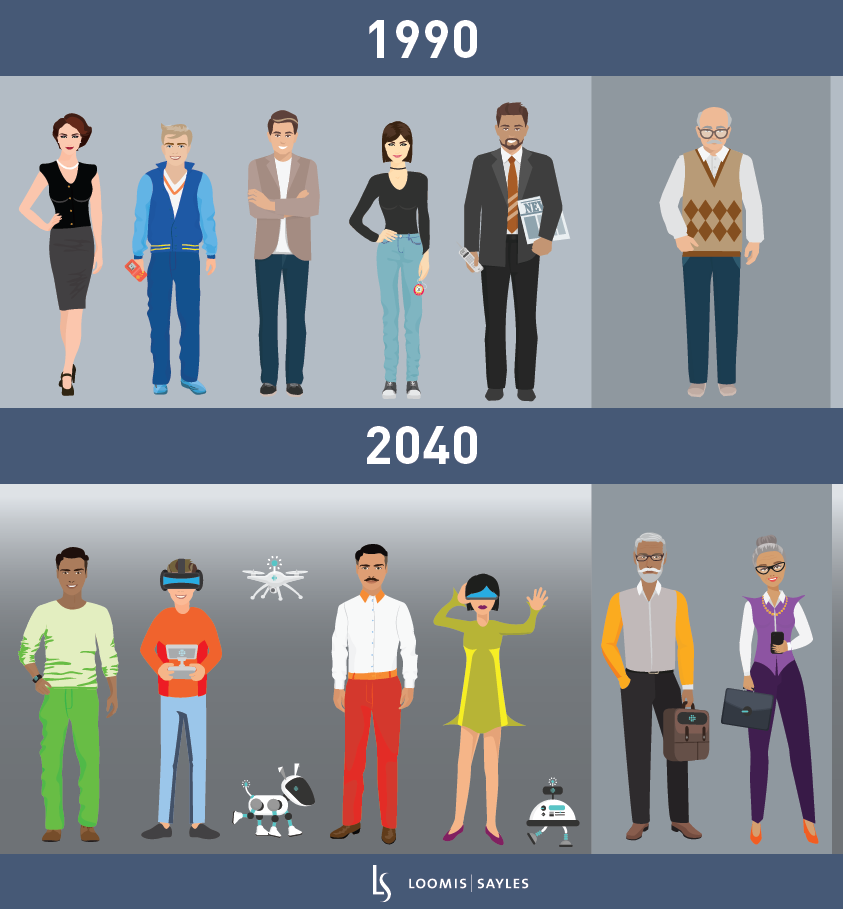It’s no secret that people are living longer. Falling fertility rates indicate that, on average, global populations are getting older. This “demographic tsunami” has already hit Japan, and continental Europe is not far behind. In 1990, the group of countries that now form the euro zone had one older person (65+) for nearly five people of working age. The World Bank forecasts that by 2040, these countries will have one older person for every two of working age.1 And if that happens, I believe bank share price performance in the countries that are most affected could take a significant hit.
Why? Let’s first look at the correlation between aging populations and bank stocks.
Bank stocks mirror demographics
Since 1990, price performance of bank stocks in each of the Group of Seven (G7) nations, which includes the largest and most advanced economies,2 has mirrored demographic trends in each country. For example, Canadian and US bank stocks have performed the strongest of the group. I believe that has been helped by the fact that both countries have the lowest old-age dependency ratio,3 and have had the highest population growth over that period. At the other end of the scale, Japanese banks have performed the worst, down by over 80% during the same period. Of the G7, Japan has the highest old-age dependency ratio, and has had the lowest population growth since 1990. Aging populations are associated with lower GDP growth and lower interest rates3—a combination that provides a difficult backdrop for bank stocks.
Thankfully, people are not just living longer, they are also staying healthier. This should enable workers to extend their income-earning years beyond the traditional retirement age. Consider that in 2018, more than 1,000 people over 65 years old ran the New York City Marathon—roughly five times the number who ran in 1990.4 Who hasn’t admired aging rock stars who, in their 70s, remain as agile as ever, prancing and pouting on stage singing “Jumpin’ Jack Flash” or “My Generation” while on global tour?

Banks will need to adapt
An aging population isn’t necessarily all bad for banks, but to meet customer needs, they will likely have to offer older populations a better mix of products like low-cost savings products and clear financial advice. Banks may also have to adapt to lower demand for borrowing, and more demand for investments. I think banks and other financial services companies that adapt their business models to changing demographic trends should do well over time.
Over the long term, I think bank share prices in countries with higher population growth and less aging should continue to perform relatively better than their counterparts in countries that are aging more rapidly. That should bode well for US and UK banks. According to World Bank projections, these two countries will have the lowest old-age dependency ratios in 2040, and the smallest increase in old-age dependency ratios from now until 2040 among the G7. Meanwhile banks in Japan, Italy and Germany could continue to face relatively severe demographic headwinds.
But I could be wrong. If my 2040 forecasts turn out to be incorrect, don’t bother me. I’ll be too busy skateboarding.

[1] The old-age dependency ratio is the balance of people over the age of 65 to those of ‘working’ age (15-64). World Bank data and projections, last revised 9/20/2018. https://databank.worldbank.org/data/reports.aspx?Report_Name=German-age-dependency-ratio-&Id=5358e0d7#
[2] Canada, France, Germany, Italy, Japan, the United Kingdom and the United States
[3] https://www.stlouisfed.org/on-the-economy/2016/september/aging-populations-lower-economic-growth
[4] https://results.nyrr.org/event/901104/finishers#af=65&at=69&page=1
MALR023294





